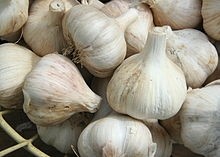Dispatches from IFT 2012 Las Vegas
Kalsec prepares for rise in adulteration cases

Delegates at an IFT seminar on the subject heard David Bolliet, analytical research and development manager at Kalsec predict a rise in instances of adulteration of such ingredients. The oils are used to infuse common consumer products such as garlic bread.
“There’s definitely an economic incentive to adulterate garlic and onion essential oils,” said Bolliet. “There was overproduction of garlic in 2006, when consumption per year was about 80t, but there was about 300t on the market.”
Since then, industry had moved to redress the balance and Bolliet said: “We are coming to a shortage situation for garlic and prices will go up. In 2006, there was a shortage in supply and prices went up. In 2007 we saw an increase in adulteration in the market. We had samples coming to us and some batches were 100% adulterated.”
Adulteration will go up
Very low yields of oil in comparison to processing weight in combination with limited supply made onion-based essential oils an equally attractive target for adulteration, he said. Criminals could easily see the value in replacing costly ingredients with much cheaper ones and creaming off the mark-up. “In the next two years adulteration cases [in these areas] will go up.”
In most cases, the adulteration seen by Bolliet had not posed a threat to health. However, it had posed a significant threat to companies marketing oils as completely natural, as synthetic materials were being used as substances in the adulteration process.
It was extremely difficult to identify the origin of the adulteration, especially since in many cases producers were farmsteads whose products would be consolidated with other supplies in large warehouses, said Bolliet.
Criminals fool standard detection methods
In addition, some of the criminals who were engaging in the process of adulteration were so sophisticated, they were able to fool standard detection methods for adulteration.
For example, a common way of detecting synthetic compounds was to use a radiocarbon and stable isotope test for carbon 14, said Bolliet, since anything synthetic would not register with carbon 14. However, some criminals were adding carbon 14 to their synthetic substance to fool the test.
Kalsec had devised tests combining gas chromatography using a flame ionisation detector, principal component analysis and multiple linear regression to root out the counterfeit substances.
However, Bolliet said the tests had so far only been applied to onion and garlic essential oils. “There are other essential oils out there, so what’s next? We don’t know.”
















